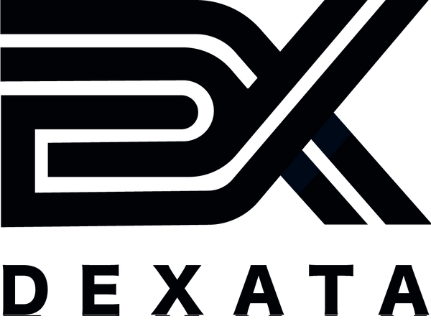
Troubleshooting and Debugging of OneTrust Cookie Consent Categories with Tealium Integration
Ensuring proper management of cookie consent categories has become a fundamental aspect of modern website operations, affecting both legal compliance and user trust. Cookie consent solutions like OneTrust, when integrated with Tealium are designed to help sites meet privacy regulations like GDPR and CCPA, requiring precise categorization and control over cookies associated with analytics, advertising, functionality, and other use cases. Yet, despite their widespread adoption, organizations often face complex challenges in configuring and maintaining these systems. Issues may include incorrect blocking behavior, misfired scripts, inaccurate consent records, and poor handling of regional laws or user preferences. From misconfigured scripts to category mapping errors, issues can lead to cookie misbehaviour, analytics data loss, and broken user consent flows.
Technical hurdles regularly arise during implementation. Typical mistakes include failing to block cookies prior to user consent, not providing granular consent controls, neglecting consent log tracking, and misconfiguring the firing sequence of scripts and tags. Debugging these problems requires a combination of policy expertise, rigorous tag management, and hands-on testing and browser developer consoles. Moreover, ongoing updates, regional law awareness, and regular audits are essential for staying compliant and maintaining robust, reliable consent management.
This article offers an in-depth guide to the most common troubleshooting scenarios encountered when dealing with cookie consent categories in OneTrust and Tealium. With a focus on both technical and operational best practices, it aims to empower website administrators, marketers, and developers to identify, resolve, and prevent consent-related problems—ultimately safeguarding data integrity and user privacy while ensuring compliance with evolving regulations.
Common Cookie Consent Errors in OneTrust with Tealium Integration
Cookie consent platforms such as OneTrust play a crucial role in helping websites comply with privacy regulations like GDPR (General Data Protection Regulation) and CCPA (California Consumer Privacy Act). These regulations require websites to obtain explicit consent from users before placing certain cookies, and to give users control over their data. However, complexities arise when:
- The consent banner or categories don’t display properly.
- Consent states aren’t correctly captured or propagated.
- Cookies fire prematurely before consent.
- Analytics data is lost due to blocking without fallback.
Troubleshooting involves systematically identifying where the failure occurs — whether it’s script blocking, configuration issues in tag management in Tealium, or integration mismatches — and then resolving those root causes. Debugging often requires use of browser developer tools, consent logs, and vendor-specific scans or consoles to verify consent states and script behaviours.
Effective debugging ensures that consent flows work smoothly, legal obligations are met, and marketing or analytics tools receive accurate user consent signals.
As shown in the image below, cookie consent categories such as Strictly Necessary, Targeting, Performance, and others are not displaying. To ensure these categories appear correctly, please follow the steps outlined below.

Illustration of Missing Cookie Consent Categories
Practical Troubleshooting Steps for Cookie Consent Categories
If the OneTrust cookie banner or categories are not visible on your website, follow this detailed step-by-step guide to resolve the issue: –
Step 1: Toggle off OneTrust Extensions in Tealium
- Navigate to your Tealium profile.
- Temporarily toggle off all OneTrust-related extensions.
- Toggle off the Consent Preference Dialog (Consent Management) to prevent any script conflicts during testing.
Step 2: Re-run a Scan in OneTrust
- Log into your OneTrust account.
- Go to Cookie Consent → Search for your Website → Open Website Entry.
- Click “Scan Now” to refresh cookie detection.
- In Advanced Settings, add the query parameter onetrustscan=true.
- Click “Scan Now” again to initiate a more thorough scan.
Step 3: Publish the Latest Website Script
- Navigate to the Website Scripts section in OneTrust.
- Verify the published date and script version to confirm they are current.
- Publish the latest script version to production.
- In the Review sections, ensure Google Analytics tracking is enabled.
- For Single Page Application sites, enable SPA support.
- Use the “Publish Test and Preview” option before finalizing publication.
- Wait 2–5 minutes for propagation.
Step 4: Re-enable OneTrust Extensions in Tealium
- Return to your Tealium profile.
- Re-enable all previously disabled OneTrust extensions and the Consent Preference Dialog.
- Save and publish your changes in Tealium to ensure the updates take effect.
Step 5: Clear Browser Cache and Validate
- Clear cookies and cache from your browser.
- Perform a hard reload using Ctrl+Shift+R (Windows/Linux) or Cmd+Shift+R (Mac).
- Open your website and confirm that the OneTrust cookie banner appears along with categories as expected.

Display of All Cookie Consent Categories
Conclusion
Troubleshooting cookie consent categories, especially when integrating platforms like OneTrust with Tealium, requires methodical steps and keen monitoring. The complex ecosystem of consent management, tag firing, and tracking tools demands constant vigilance to ensure consent banners operate correctly, consent states are captured accurately, and data integrity is maintained. With this structured approach, website administrators can confidently resolve common issues, maintain regulatory compliance, and provide transparent and seamless user consent experiences.
Continual testing, clear documentation, and quick updates are the hallmarks of effective cookie consent management in a rapidly evolving privacy landscape. Additionally, fostering cross-team collaboration and leveraging automation tools can significantly enhance the accuracy and efficiency of consent processes. Proactive monitoring and adaptable strategies ensure that organizations remain resilient and compliant as privacy regulations and user expectations continue to change.




